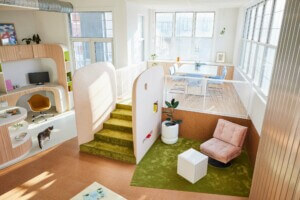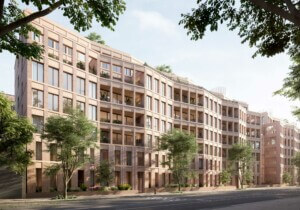Office space is in short supply in Brooklyn. A 2004 rezoning of downtown Brooklyn was intended to facilitate the development of 4.5 million square feet of Class A office space. Since then, the local development corporation Downtown Brooklyn Partnership estimates that only 250,000 square feet of office space has been built.
The space crunch also spreads north, to Williamsburg. This week, the Department of City Planning is expected to approve developer Toby Moskovits’ (of Heritage Equity Partners) application to alter manufacturing-only zoning for a nine-story, 480,000-square-foot office building at 25 Kent Avenue.
AN first reported on the Moskovits’ office plans last April. The building’s design by New York–based HWKN appears similar in both the original and updated renderings. Ziggurat-style terracing reduces the structure’s mass. At street level, the brickwork and arched floor-to-ceiling windows reference the warehouse it may replace.
Currently, the lot, between North 12th and North 13th streets, lies in a M1-2 zone. In this area, zoning requires a non-manufacturing facility build in a manufacturing zone to devote more than half its space to medical, school, religious, or non-profit facilities. Moskovits would like the building to be offices, only, thought a portion of the project may be reserved for light-manufacturing use.
Certifying the application triggers the Uniform Land Use Review Procedure (ULURP), a process that can take months. The ULURP gathers opinions on the project’s request from Brooklyn’s Community Board 1; the borough president, Eric Adams; City Planning; and the City Council. So far, signs are good: area Councilman Steve Levin is in favor of the project, Crain’s reports.
If approved, Moskovits’ application could have profound influence on others looking to subvert current zoning in manufacturing areas. Due to the current restrictions, developers shy away from building non-manufacturing in manufacturing zones; creating community space is less profitable than creating office space. Go figure.










